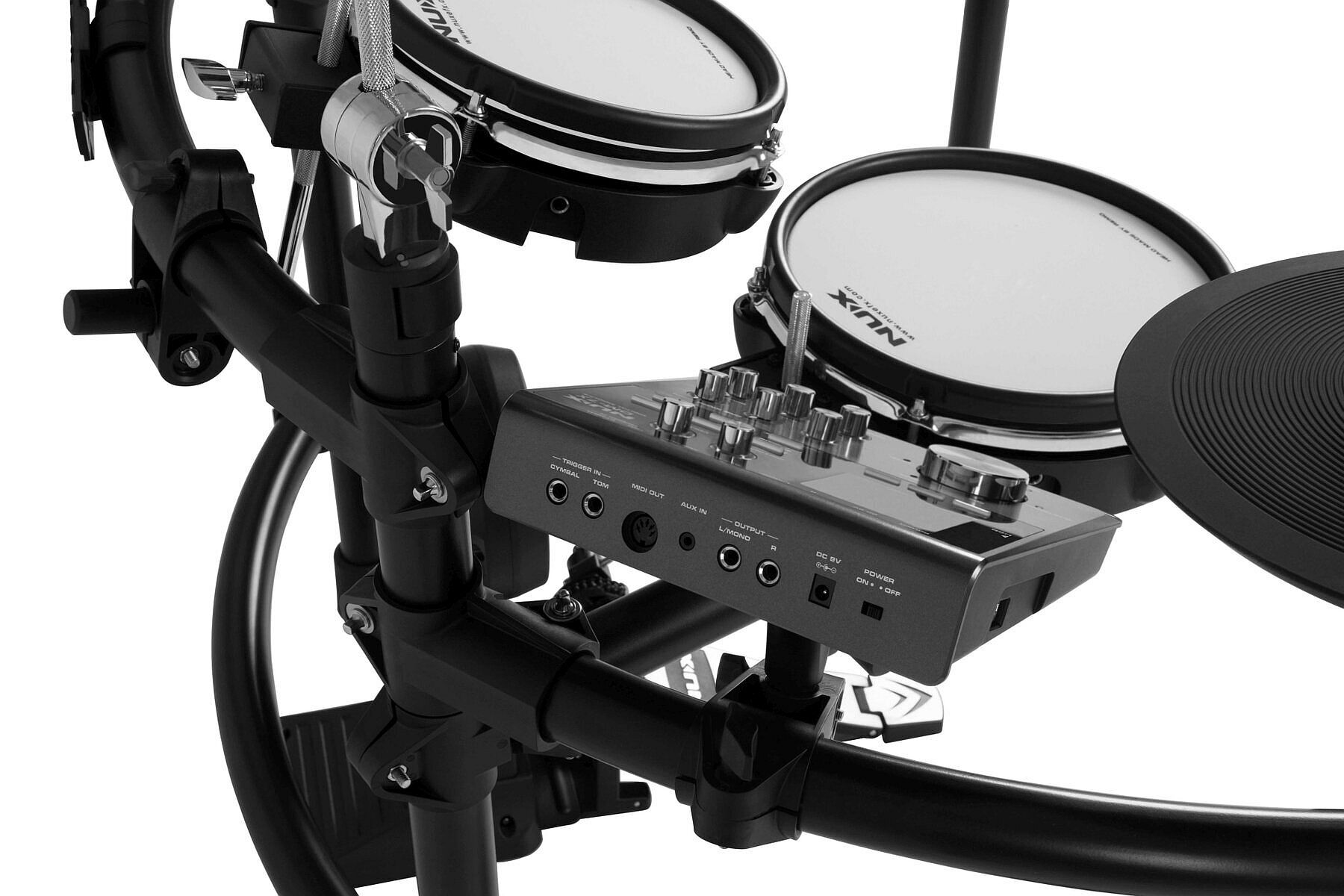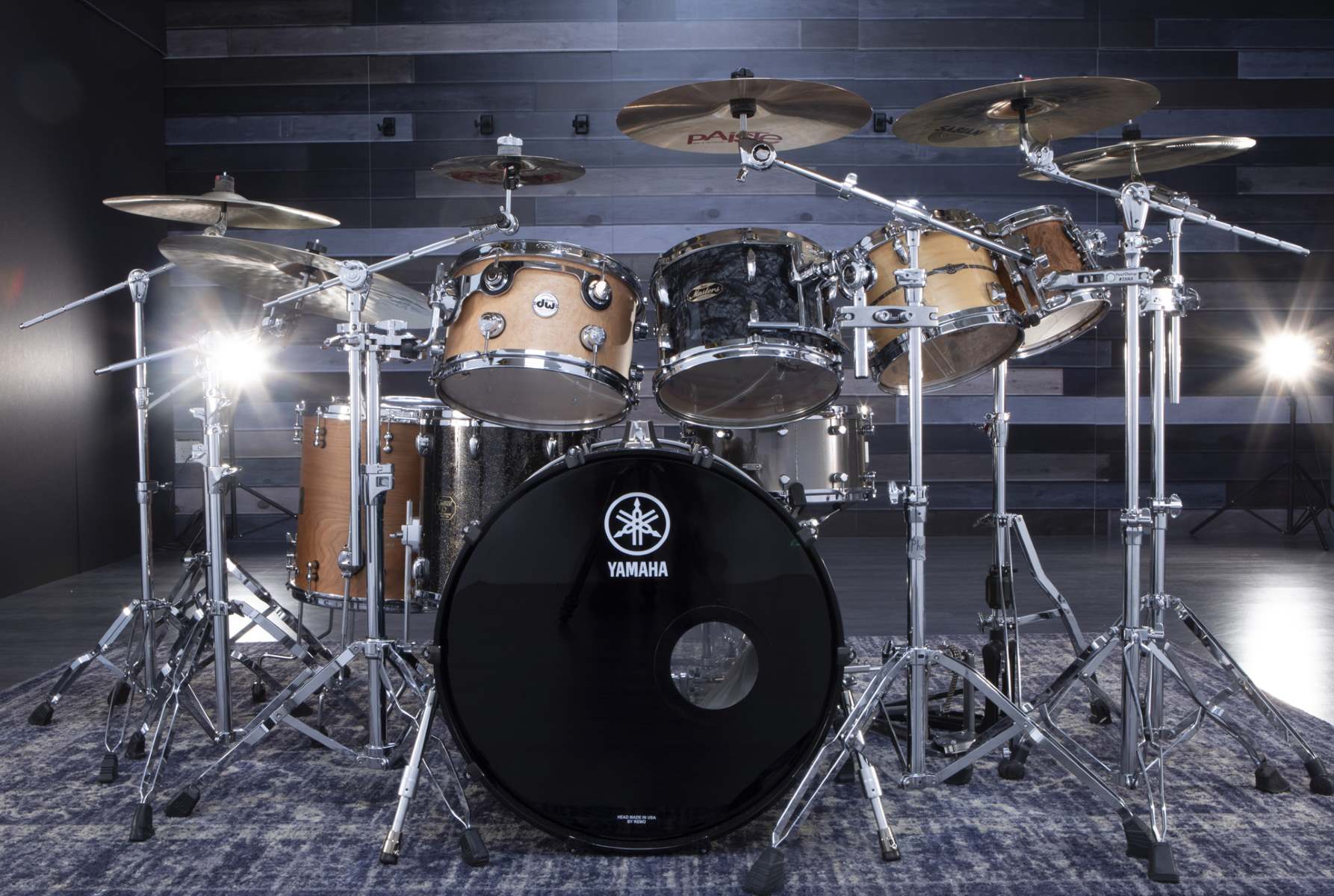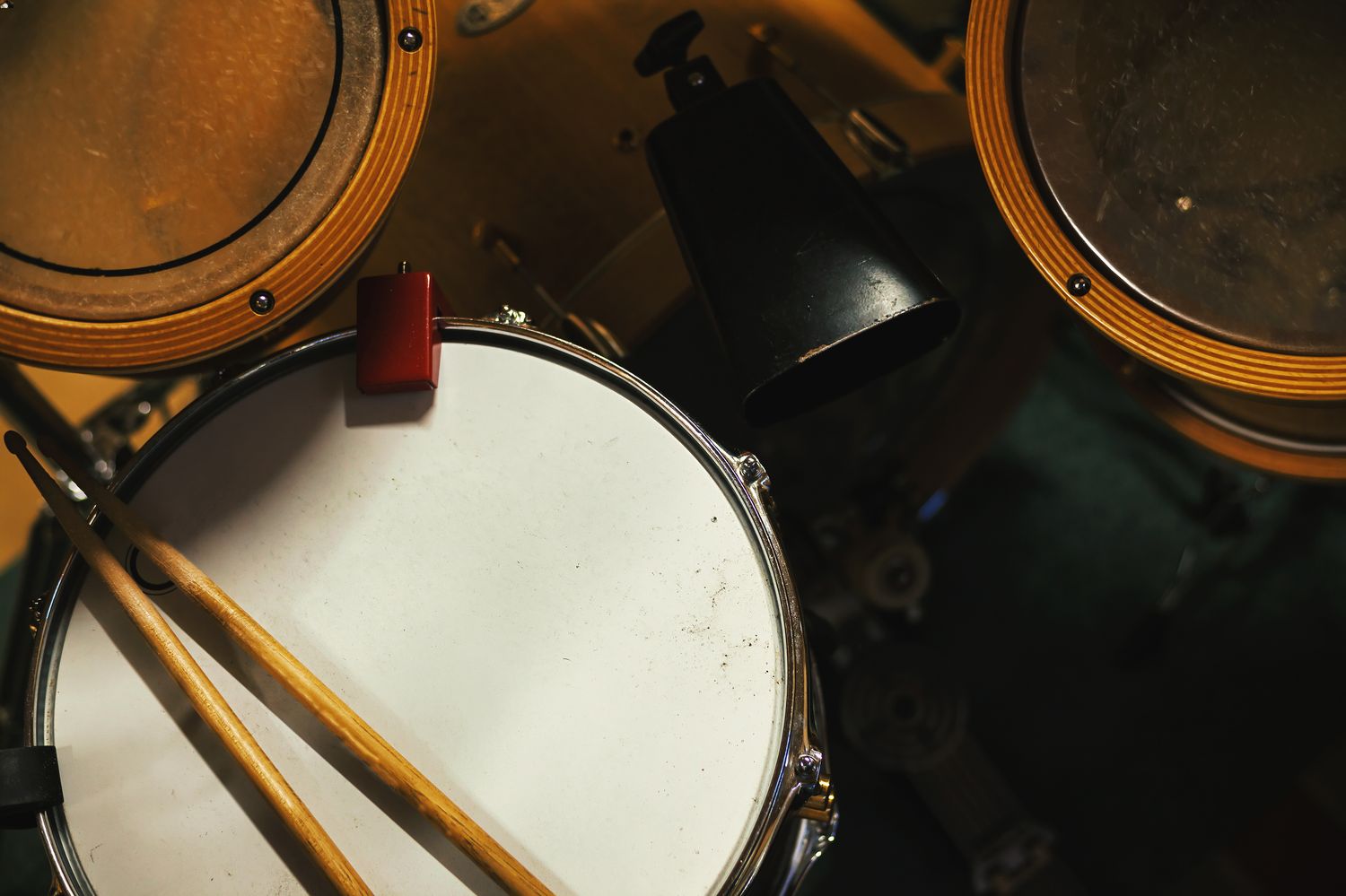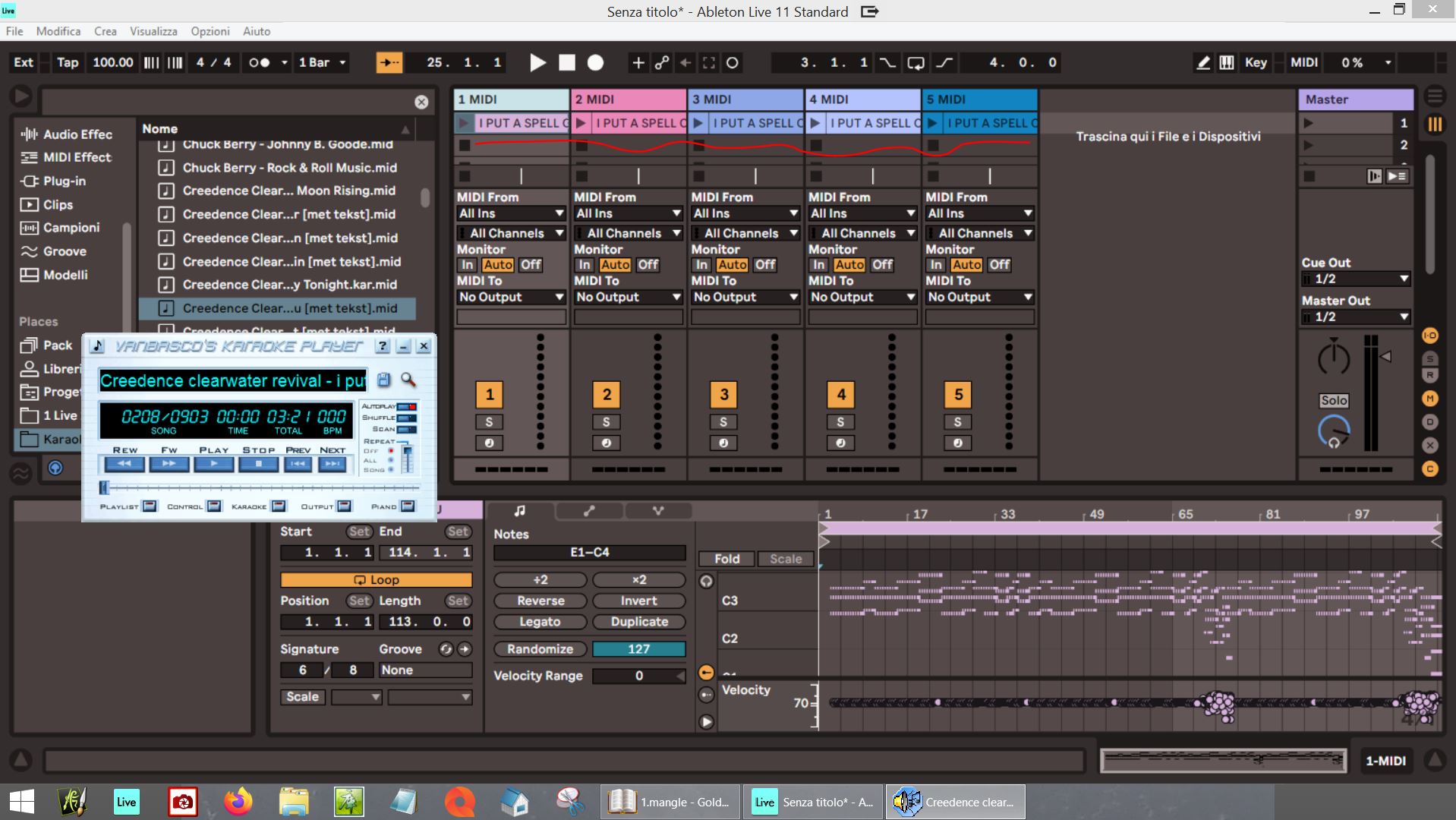Home>Instruments>Drums>How To Make MIDI Drums
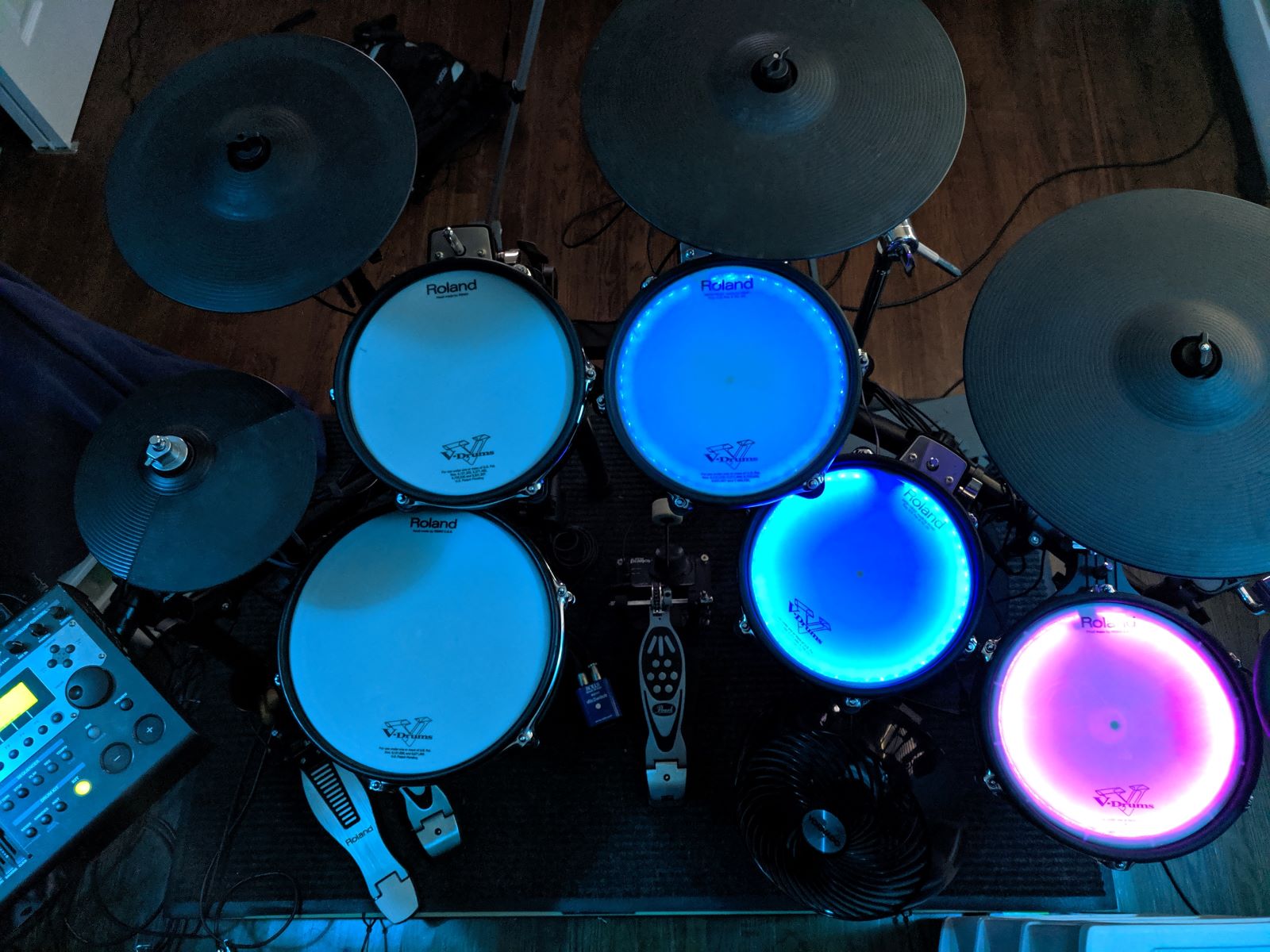

Drums
How To Make MIDI Drums
Published: February 7, 2024
Learn how to make MIDI drums with our comprehensive guide. Discover tips and techniques for creating realistic and dynamic drum tracks. Master the art of MIDI drum programming and take your music production to the next level.
(Many of the links in this article redirect to a specific reviewed product. Your purchase of these products through affiliate links helps to generate commission for AudioLover.com, at no extra cost. Learn more)
Table of Contents
Introduction
Welcome to the fascinating world of MIDI drums! Whether you’re a seasoned drummer looking to expand your sonic horizons or a music enthusiast eager to explore the realm of digital percussion, MIDI drums offer an exciting avenue for unleashing your rhythmic creativity. In this comprehensive guide, we’ll delve into the realm of MIDI drums, covering everything from understanding MIDI technology to creating and editing dynamic drum patterns. By the end of this journey, you’ll be equipped with the knowledge and tools to craft compelling drum sequences that elevate your musical productions to new heights.
Before we embark on this exploration, it’s essential to grasp the fundamental concepts of MIDI and how it revolutionizes the way we interact with electronic percussion instruments. Additionally, we’ll navigate the diverse landscape of MIDI drum software, offering insights into selecting the right tools for your specific needs. As we progress, we’ll unravel the intricacies of setting up MIDI drum software and delve into the art of crafting captivating drum patterns that inject energy and groove into your music.
Whether you’re a recording artist, producer, or hobbyist musician, understanding MIDI drums opens up a world of possibilities, enabling you to unleash your rhythmic ingenuity with unparalleled flexibility and precision. So, without further ado, let’s embark on this exhilarating journey into the realm of MIDI drums, where innovation and rhythm converge to inspire and captivate.
Understanding MIDI
MIDI, which stands for Musical Instrument Digital Interface, serves as the backbone of modern electronic music production, enabling seamless communication between musical instruments, controllers, and software. At its core, MIDI is a versatile protocol that transmits a wide array of musical data, including note information, velocity, pitch, modulation, and more, allowing for the precise control and manipulation of sound in real time.
One of the key advantages of MIDI is its non-destructive nature, meaning that the original musical performance is not altered when transmitted via MIDI. Instead, MIDI data captures the nuances of a performance, such as the timing and dynamics of each note, and allows for extensive post-performance editing and manipulation. This flexibility makes MIDI an invaluable tool for refining drum performances, tweaking timing, and experimenting with different rhythmic variations.
Furthermore, MIDI empowers musicians to seamlessly integrate a diverse range of electronic percussion instruments into their setups, from drum pads and electronic drum kits to virtual drum modules and software instruments. This versatility enables drummers and producers to access an expansive palette of sounds and textures, transcending the limitations of traditional acoustic drums.
Another noteworthy aspect of MIDI is its ability to facilitate the creation of intricate drum patterns and sequences with unparalleled precision. By harnessing the power of MIDI, musicians can craft complex rhythms, layer multiple percussive elements, and experiment with unconventional time signatures, all within the digital domain.
As we venture further into the realm of MIDI drums, understanding the intricacies of MIDI technology will lay a solid foundation for harnessing its potential to craft compelling and expressive drum performances. With this knowledge in hand, you’ll be well-equipped to explore the myriad possibilities that MIDI drums offer, paving the way for innovative and dynamic rhythmic creations.
Choosing MIDI Drum Software
When venturing into the realm of MIDI drums, selecting the right software is pivotal to realizing your creative vision and maximizing your rhythmic potential. The market offers a diverse array of MIDI drum software, each with its unique features, interfaces, and sonic capabilities. As you embark on this journey, consider the following factors to guide your selection process:
- Interface and Workflow: Opt for MIDI drum software with an intuitive interface and workflow that aligns with your creative process. Smooth navigation, easy access to essential functions, and customizable options can significantly enhance your productivity and creativity.
- Sound Library and Customization: Explore the software’s built-in sound library and the extent to which you can customize and manipulate drum sounds. Look for a diverse range of high-quality drum samples, as well as the ability to tweak parameters such as pitch, decay, and effects to sculpt your ideal drum tones.
- Realism and Expression: Assess the software’s capacity to emulate the nuances of acoustic drums, including realistic dynamics, articulations, and responsiveness to performance nuances. Authentic drum realism can elevate your productions and infuse your rhythms with organic depth and character.
- Integration and Compatibility: Consider the software’s compatibility with your existing setup, including compatibility with your digital audio workstation (DAW), operating system, and MIDI controllers. Seamless integration ensures a cohesive and efficient production environment.
- Performance and Stability: Prioritize software that delivers reliable performance and stability, minimizing latency and ensuring smooth operation even when handling complex drum arrangements and intricate patterns.
Additionally, exploring user reviews, video demonstrations, and trial versions of MIDI drum software can offer valuable insights into the user experience and sonic capabilities, aiding in your decision-making process. Whether you’re drawn to feature-rich drum samplers, intuitive drum pattern sequencers, or comprehensive drum production suites, the right MIDI drum software will serve as your creative companion, empowering you to craft captivating rhythms and elevate your musical endeavors.
By carefully evaluating these considerations and aligning them with your artistic aspirations, you’ll be well-positioned to choose MIDI drum software that resonates with your creative ethos and fuels your rhythmic explorations.
Setting Up MIDI Drum Software
Once you’ve selected the ideal MIDI drum software to fuel your rhythmic aspirations, the next crucial step is setting up the software within your music production environment. This process involves configuring the software to seamlessly communicate with your MIDI controllers, digital audio workstation (DAW), and other essential components. Here’s a comprehensive guide to setting up MIDI drum software for a streamlined and immersive drumming experience:
- Integration with Digital Audio Workstation (DAW): Begin by ensuring that your chosen MIDI drum software is seamlessly integrated with your preferred DAW. Most MIDI drum software can function as a plugin within your DAW, allowing you to access its features and sounds directly within your music production environment.
- Mapping MIDI Controllers: If you’re using MIDI drum pads, electronic drum kits, or other MIDI controllers to trigger drum sounds, it’s essential to map these controllers to your MIDI drum software. This process involves assigning specific drum sounds or pads to corresponding MIDI notes, ensuring that your performance accurately triggers the intended sounds within the software.
- Audio and MIDI Routing: Configure the audio and MIDI routing within your DAW to establish a seamless connection between your MIDI drum software and your audio interface. This step ensures that the MIDI data generated by your performance reaches the MIDI drum software, triggering the appropriate drum sounds and responding to your playing dynamics.
- Optimizing Latency and Performance: Fine-tune your software settings and audio buffer size to minimize latency, ensuring that your drumming feels responsive and immediate. Adjusting these parameters can enhance the real-time interaction between your performance and the MIDI drum software, fostering a natural and immersive playing experience.
- Exploring MIDI Mapping and Automation: Delve into the software’s MIDI mapping and automation capabilities, allowing you to assign MIDI parameters to various drum sound parameters and automate changes over time. This functionality empowers you to infuse your drum performances with evolving dynamics, effects, and sonic nuances.
By meticulously configuring your MIDI drum software within your production environment, you’ll unlock its full potential, seamlessly integrating it into your creative workflow and performance setup. This integration paves the way for immersive drumming experiences, enabling you to express your rhythmic ideas with precision and creativity.
With your MIDI drum software harmoniously integrated into your musical arsenal, you’re poised to embark on a rhythmic journey filled with expressive drum performances and innovative sonic explorations.
Creating MIDI Drum Patterns
Embarking on the creation of MIDI drum patterns opens a gateway to boundless rhythmic creativity, empowering you to craft dynamic and expressive percussive sequences that breathe life into your music. Whether you’re aiming to lay down infectious grooves, intricate polyrhythms, or pulsating electronic beats, the process of crafting compelling MIDI drum patterns encompasses both artistry and technical finesse. Here’s a comprehensive guide to igniting your rhythmic compositions through the creation of MIDI drum patterns:
- Rhythmic Inspiration and Musical Context: Before diving into the intricacies of MIDI programming, immerse yourself in the musical context of your composition. Draw inspiration from the genre, mood, and overall sonic landscape of your music, envisioning how the drum patterns will complement and propel the rhythmic energy of the piece.
- Pattern Composition and Structure: Begin by conceptualizing the structure of your drum patterns, considering the interplay of kick, snare, hi-hats, percussion, and additional elements. Explore variations in pattern length, dynamics, and rhythmic density, aiming to strike a balance between coherence and engaging complexity.
- Exploration of Groove and Feel: Infuse your drum patterns with a distinct sense of groove and feel, experimenting with swing, shuffle, and humanized timing adjustments to impart an organic and infectious rhythmic quality. Pay attention to the interplay between individual drum elements, aiming to create cohesive and captivating rhythmic interactions.
- Dynamic Articulations and Accents: Leverage the expressive capabilities of MIDI to introduce dynamic articulations and accents within your drum patterns. Utilize velocity adjustments, note lengths, and subtle variations in timing to imbue your patterns with nuanced dynamics, enhancing the ebb and flow of the rhythmic performance.
- Layering and Textural Depth: Experiment with layering multiple drum sounds and textures within your patterns, exploring the fusion of acoustic and electronic elements to enrich the sonic palette. By judiciously layering percussive elements, you can create depth and dimension within your drum patterns, elevating their impact and sonic richness.
As you immerse yourself in the process of crafting MIDI drum patterns, embrace experimentation, iteration, and the fusion of technical precision with artistic intuition. By honing your rhythmic sensibilities and leveraging the creative potential of MIDI, you’ll breathe life into your compositions, infusing them with captivating and dynamic drum performances that resonate with listeners.
With these foundational principles and creative approaches at your disposal, you’re poised to sculpt compelling MIDI drum patterns that serve as the rhythmic heartbeat of your musical endeavors, propelling your compositions to new heights of expressive and rhythmic allure.
Editing MIDI Drum Patterns
Once you’ve crafted your initial MIDI drum patterns, the process of editing emerges as a transformative phase, allowing you to refine, embellish, and tailor your rhythmic creations with precision and finesse. Whether you seek to fine-tune the timing of individual hits, experiment with rhythmic variations, or introduce subtle embellishments, MIDI editing serves as a powerful tool for sculpting compelling and expressive drum performances. Here’s a comprehensive guide to navigating the art of editing MIDI drum patterns:
- Rhythmic Precision and Quantization: Begin by assessing the rhythmic precision of your drum patterns, ensuring that the timing of individual hits aligns with the desired rhythmic feel. Utilize quantization tools to snap notes to the grid at varying degrees of strength, striking a balance between rhythmic tightness and organic fluidity.
- Humanization and Groove Adjustments: Inject a sense of humanized feel and groove into your drum patterns by subtly adjusting the timing and velocity of individual hits. Introduce nuanced timing variations and velocity fluctuations to emulate the expressive nuances of a live drum performance, infusing your patterns with organic dynamism.
- Pattern Variations and Iterative Refinement: Experiment with creating variations of your drum patterns, exploring diverse rhythmic motifs, fills, and transitional elements. Through iterative refinement and experimentation, you can sculpt evolving drum arrangements that captivate and propel the momentum of your compositions.
- Layering and Textural Enhancement: Delve into the realm of layering and textural enhancement, leveraging MIDI editing to introduce subtle variations in drum sound selection, articulations, and tonal characteristics. By layering complementary percussive elements and textures, you can enrich the sonic depth and impact of your drum patterns.
- Dynamics and Articulations: Refine the dynamics and articulations within your drum patterns, meticulously adjusting velocity, note lengths, and accentuations to evoke a compelling sense of rhythmic expression. Tailoring the dynamic contour of your patterns can imbue them with an immersive sense of ebb and flow, enhancing their emotive impact.
As you navigate the realm of MIDI drum pattern editing, embrace a balance of technical precision and artistic intuition, allowing the expressive potential of your rhythms to shine through. By refining and shaping your drum performances with meticulous attention to detail, you’ll sculpt dynamic and captivating rhythmic tapestries that elevate your musical compositions.
With these editing techniques and creative approaches at your disposal, you’re poised to unleash the full potential of your MIDI drum patterns, infusing them with expressive depth, rhythmic allure, and an immersive sonic presence that resonates with listeners.
Conclusion
Congratulations on embarking on this exhilarating journey into the realm of MIDI drums! Throughout this comprehensive guide, we’ve traversed the diverse landscape of MIDI drum production, from understanding the foundational principles of MIDI technology to crafting and refining expressive drum performances. As you conclude this exploration, it’s essential to reflect on the transformative potential of MIDI drums and the boundless opportunities they offer for rhythmic innovation and sonic creativity.
By unraveling the intricacies of MIDI technology, you’ve gained insight into the versatile and non-destructive nature of MIDI data, empowering you to capture and manipulate the nuances of drum performances with unparalleled precision. The seamless integration of MIDI drum software into your production environment has unlocked a world of sonic possibilities, enabling you to access a diverse array of drum sounds, textures, and dynamic articulations to elevate your rhythmic compositions.
As you’ve delved into the art of crafting MIDI drum patterns, you’ve honed your rhythmic sensibilities, exploring the fusion of technical finesse and artistic expression to breathe life into your compositions. From the creation of captivating grooves to the iterative refinement and embellishment of drum performances, you’ve harnessed the creative potential of MIDI to sculpt dynamic and immersive rhythmic tapestries.
As you venture forward, armed with the knowledge and insights gleaned from this guide, you’re poised to infuse your musical endeavors with compelling and expressive drum performances that captivate and resonate with listeners. Whether you’re a recording artist, producer, or aspiring drummer, the realm of MIDI drums offers a boundless canvas for rhythmic exploration, innovation, and sonic storytelling.
In this ever-evolving landscape of music production, MIDI drums stand as a testament to the fusion of technological ingenuity and artistic expression, empowering creators to shape rhythmic landscapes that transcend boundaries and inspire emotive connections. With your newfound understanding of MIDI drums, you’re primed to embark on a rhythmic odyssey filled with boundless creativity, expressive depth, and the rhythmic allure that defines captivating musical experiences.
So, as you harness the power of MIDI drums to elevate your rhythmic compositions, remember that the journey of sonic exploration and creative expression is an ongoing adventure, ripe with possibilities and opportunities for rhythmic innovation. Embrace the rhythmic canvas before you, infuse it with your unique voice, and let the pulse of MIDI drums propel your musical narratives to new heights.



